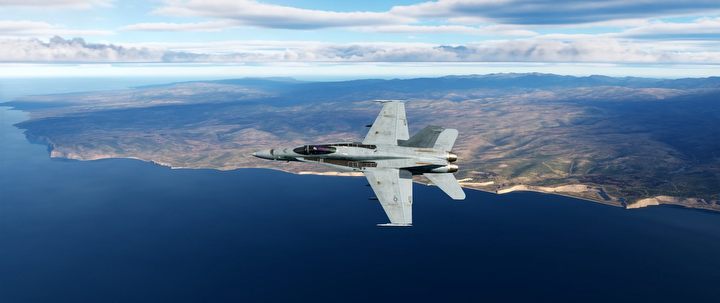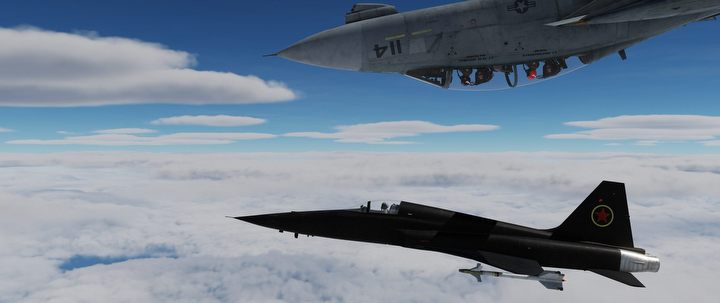Gaming Top Gun - We've Talked With Baltic Dragon About Creating Cinematic DCS Experience
Although games about airplanes aren't hugely popular, there are ways to feel like Tom Cruise from Top Gun. We asked Baltic Dragon – the creator of the DCS World campaign – about the secrets of creating cinematic stories set in the world of air forces.
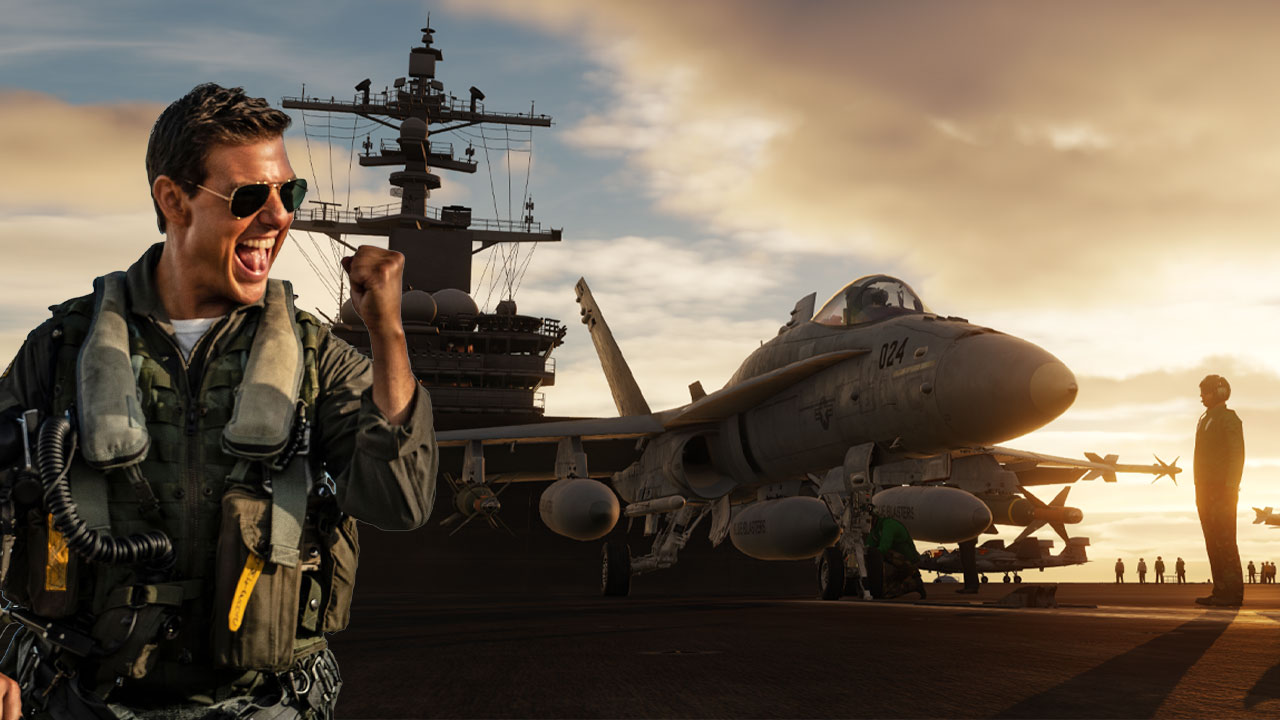
The original hit movie Top Gun was released in 1986 – a time when computer games were just beginning to make their mark in pop culture and entertainment. Everything was easier back then – both when it came to delighting the viewers with stunning air combat footage, and dazzling the players with a few vector lines pretending to be a F-14 Tomcat fighter. Nevertheless, a dozen or so games referring to the Top Gun that were released over a period of 26 years did not turn out to be as great hits as the film, and none of them became a timeless classic.
In fact, all of them were simple, arcade shooters that got lost in the maze of similar games. No studio took advantage of the greatest wave of popularity of flight simulators that was occurring in the early 90s. Made with arguably the greatest flair, Top Gun: Fire at Will (1996) could boast cutscenes featuring, among others, James Tolkan known from the film, but the game itself deterred fans of flying with some great gameplay simplifications and an extremely underwhelming story with poor performances of the remainder of the cast.
The sequel, Hornet's Nest, described as too difficult for casuals and too silly for veterans, also brought a bag of mixed feelings, and the sole significant improvement over its predecessor was the terrain graphics. The creators wanted to reconcile realism with universal accessibility, but such attempts usually ended in failure. It's worth noting, however, that in Hornet's Nest, the main character – Maverick – switched to the F/A-18 Hornet, which is a slightly older version of the one he flies in the sequel to Top Gun.
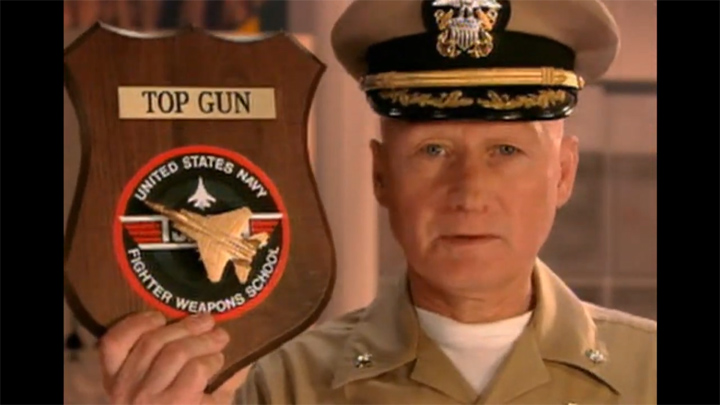
Maybe there’s no games, but there are DCS World campaigns
Today, the reality is completely different. New generations are more excited about superheroes than fighter jets, and flight simulators have become ultra-realistic and inevitably attract a much narrower group of enthusiasts compared to other genres. In such an environment, is there still room for a game based on the movie Top Gun: Maverick? Perhaps so – a sandbox based on the great Strike Commander, with a fighter jet in the lead role and a captivating story, could be a welcome breath of fresh air among the hackneyed entries in the said series. Unfortunately, we will likely never find out about it, because large publishers won't decide to take such risks, and only they could afford to buy the appropriate licenses and realize such a game with the right momentum.
This doesn't mean, however, that fans of flying have no way what so ever to feel like Maverick performed by Tom Cruise, or "Rooster" (Miles Teller), the son of the unforgettable "Goose." There are ways to take part in truly cinematic stories as a pilot of the F/A-18C Hornet fighter, taking off and landing on aircraft carriers, just like the heroes of Top Gun: Maverick. Look no further than the story campaigns for DCS World simulator, especially those designed strictly for two modules, F/A-18 and Supercarrier, which introduces US Navy aircraft carriers.
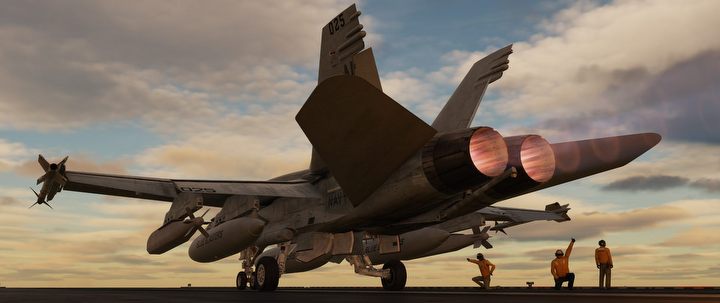
The Supercarrier module with aircraft carriers for DCS World makes you feel like being on board of a real ship. The animated crew adds a lot of immersion and realism.
Realism and cinematic action can go hand-in-hand
At the beginning, it's worth noting that these titles are certainly not intended for everyone. The main obstacle here is the degree of realism of the DCS World simulator and the accuracy with which F/A-18C Hornet was recreated. While the flight model itself is generally very accessible, the operation of individual weapons, navigation and radio communication systems requires some specific knowledge and familiarity with the subject of combat aviation. On the other hand, it's still largely a game meant for entertainment. The missions of the campaign are about reaching a destination, completing tasks, shooting, making decisions, talking to NPCs – just like in any other action game. For some people, the desire to experience such an adventure can be a good incentive to get into the world of aviation and learn about the operation of the F/A-18C Hornet.
In addition, there's also a selection of story campaigns, which differs in terms of atmosphere and complexity. On the one hand, you can experience an almost arcade game inspired by the Ace Combat series, full of cringeworthy dialog lines, and constantly leading the player by the hand. On the other hand, there are campaigns developed under the strict supervision of real Hornet pilots. There, each line of text of the radio chatter was consulted to ensure maximal realism. It may take some effort even for veterans of flight simulators to understand this cryptic jargon at first.
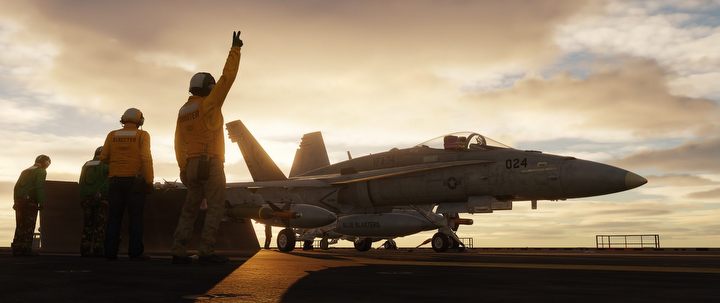
When seeing DCS screenshots, you can almost hear the Danger Zone song playing in the background. Carrier operations are jaw-dropping!
Virtually most of these story expansions are made with small, 3rd-party studios, and sometimes even individual enthusiasts who can count on huge support of the community. Thanks to this, many people from all over the world are always involved in the projects. There's no problem with the selection of voice actors with natural accents, you can also count on the above-mentioned support of people professionally involved with military aviation. We were able to talk to the creator of one of the most recognized campaigns in the DCS community – Baltic Dragon – and asked him about details of his creation. So, what experiences in the Top Gun atmosphere can we get in DCS World?
From Ace-Combat style Visual Novel...
The Rising Squall campaign by Inverted is by far the most similar to a regular computer game. It's practically a combination of the style and atmosphere of the Ace Combat series with the realism of DCS World – but taking neither too far. Unlike other games, the most demanding or complicated activities here are performed for the player by the AI, putting pure action and story to the forefront. And as befits Ace Combat, the action is full of pathos and cringy dialogues. Someone is saying something all the time, dynamic soundtrack is pumping the action all the time (composed by Keiki Kobayashi himself – the author of the music for Ace Combat).
The creators gave us some hand-drawn manga-style briefing documents, illustrating the mission objectives, and on the web you can find a comic book introducing the lore and the characters of Rising Squall. Inverted has proven that it's possible to combine the rigid and serious realism of DCS World with the visual novel genre and purely console action. It's certainly not a digestible mixture for everyone, but beginners aren't likely to find a more accessible and spectacular introduction to story-based air combat.
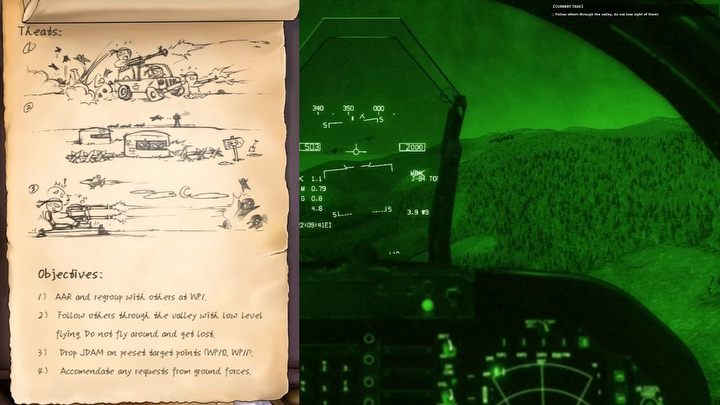
Rising Squall is more a console game than a simulator, which can be seen, for example, in the screenshot form a mission briefing.
In addition to Rising Squall, there are a couple of other campaigns that offer different experiences. Aggressors BFM from Maple Flag Missions will take us to the famous training ground in the Nevada desert to play the role of an "aggressor" plane pretending to be a hostile MiG. Operation Pontus by 373vFS Greg, 373vFS_Petritis and Baltic Dragon is a substitute for a dynamic campaign in which subsequent missions depend on our actions. A lot of quests and dialogue lines can also be found in Operation Cerberus North, Rise of the Persian Lion and The Serpent's Head 2.
...to realistic missions from real Hornet pilots
If you want something opposite to the manga-inspired Rising Squall, check out the brutal crash with authenticity and realism found in Raven One campaign, prepared by the Baltic Dragon. If the title rings a bell – it's an adaptation of a well-received book by Kevin Miller. It tells the fictional story of a group of Hornet pilots stationed on the USS Valley Forge aircraft carrier. Sent to the Persian Gulf, they have to face another military crisis in that region. The main character, Jim "Flip" Wilson, is even a graduate of the Top Gun school, and he is a slightly more authentic equivalent of "Maverick" from the movie.
The author of the book is also a former F/A-18C Hornet pilot and has participated in combat operations. So the text is full of professional notions and jargon of pilots, which some reviewers even considered a flaw. Others believe that it adds credibility and authenticity to it, throwing the reader literally on board the aircraft carrier and into the Hornet's cockpit. As you might guess, the feeling of being right in the middle of the action is even greater in front of the monitor when going through the book's mission in DCS World.
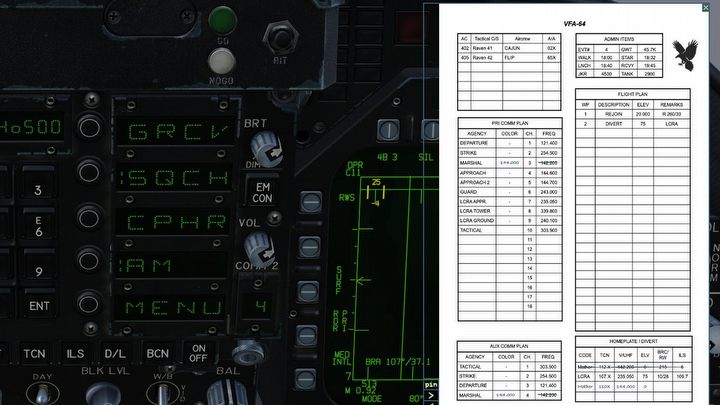
In the extremely realistic Raven One, you will not find comic-book accents. Crucial bits of information needed to complete the mission are found in a regular table full of enigmatic phrases.
Baltic Dragon was not limited to the same heroes and events as described in the novel. When portraying the missions described by Miller in DCS, he not only added new ones, complementing the whole story, but most of all he consulted everything with the author and another pilot – Vincent "Jell-O" Aiello – the creator of the famous The Fighter Pilot Podcast.
How did the book even become the basis of the fictional campaign of a flight simulator?
The idea came up during a conversation with Vincent Aiello. It's author is actually Rob Grady, the producer of the Fighter Pilot Podcast who also plays DCS World, who was pretty familiar with my previous campaigns. So we chatted with Vincent (Jell-O) first, and then we arranged to meet Kevin Miller – and it was downhill from there. In the meantime, I joined the Fighter Pilot Podcast team (now part of BVR Productions), and everything gained a lot of momentum. In the near future, we want to complete a story campaign for the F-16C Viper, created together with the F-16C pilot John "Rain" Waters from the Afterburn Podcast, and a campaign for the F-14B in cooperation with the former F-14 Tomcat radar operator – Ward "Mooch" Carroll. – Baltic Dragon
"Pilots don't talk nonsense"
There are several thousand lines of dialogues in the digital version of Raven One – and Miller and Aiello made sure that each of them sounded exactly right. In addition, there's also the documentation of missions full of tables and concepts that, at first glance, seem meaningless. Only when you completely immerse yourself in the world of pilots, familiarizing yourself with the procedures of a mission, everything will start to make sense. The "player" finds out how extremely important it is during a combat situation to operate the radio, change frequencies and carefully read the information in the pilot's handy notebook – the kneeboard.
Could the DCS campaign be "too hard" then, or is that what the community expects?
DCS World is referred to as a "study sim," and most players expect the highest possible realism from the mission. Within reason, of course, because completely realistic missions could be boring even for the greatest enthusiasts. The response from the community was amazing, overwhelmingly positive.
Even people who usually only play multiplayer praised the campaign for how it reflects the atmosphere and allows you to feel like a real F/A-18 pilot. On the other hand, there was, of course, the discontent lot: too little action, too much refueling in the air, too little pilots' chatter, etc. However, I take these allegations as proof that we've achieved our goals, and therefore delivered a campaign that will raise the bar when it comes to content available to players in DCS World. – Baltic Dragon
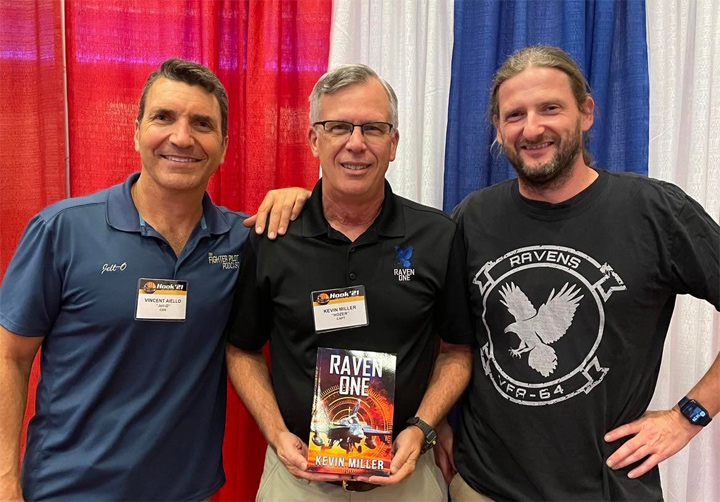
Interpreting the story from a book in a PC simulator, which doesn't let you add an intro or any cutscenes, is an additional challenge that the authors had to face. Especially since the several thousand lines of dialogue we mentioned mainly concern jargon messages that the crews exchange to effectively execute combat missions. Pointless chatter typical of movies is rare here. It turns out, however, that it all depends on the military formation or the type of aircraft, and in future campaigns, the storyline will look a bit different – more cinematic and rich.
It all depends on the campaign. There's hardly any chit-chat in Raven One because Kevin and Jell-O were very adamant about US Navy pilots "just not talking nonsense" on missions. On the other hand, when working with John Waters on the story for the F-16C, it turned out that things are a bit different in the USAF air force and casual conversations and jokes are quite common. Once I start making the campaign for the F-14 (in cooperation with Ward "Mooch" Carroll), I will surely cut some more slack like that, because it's a natural thing in a two-seat airplane. – Baltic Dragon
From Success to Prequel – Dominant Fury
The success of the book Raven One made it a trilogy. The next two volumes: Declared Hostile and Fight Fight present the further fate of Jim "Flip" Wilson in other war hot spots around the world. But there's also a fourth part – strictly designed for the DCS World. Keeping up the momentum, Baltic Dragon created a prequel to the story of Raven One called Dominant Fury, which should be released in the near future.
The story takes us three years back, to 2005, when "Flip" is already a Top Gun graduate. An incident with the hijacking of the plane over the Mediterranean Sea causes the hero and the rest of his squadron to become involved in the mission of destroying a terrorist hideout somewhere in Lebanon, which in turn sparks the attack of some militias on Israel. And then the situation becomes even more complicated...
But don't worry! Despite such serious subjects dripping with international politics, it's still just a story and there's room for completely surprising ideas. I will only reveal that in one mission, during a standard flight, "Flip" suddenly receives a signal on the rescue channel from a concerned woman... It is thanks to such moments, in an ultra-realistic simulator such as DCS World , you can show some human characteristics and emotions, even if they're delivered just with the voices of heroes.
Where did the idea for a prequel to Flip's adventures come from? Who's behind the storyline?
This certainly is the result of the success of the first part, which, frankly speaking, surprised us a bit, because we did not expect such a positive reception of Raven One. So, striking the iron while it was hot was a natural reaction, especially as we all had fun making the first part. This time, however, we adopted a slightly different course of action. Previously, I tried to reflect some of the missions in Kevin's book as reliably as possible, and only then wrote the script to the others, so that everything would make sense (of course, after lengthy discussions with the writer and Jell-O).
With Dominant Fury, they wrote almost all of the missions, and then we adapted them together to the capabilities of DCS World. As such, it's an even more ambitious project than the previous campaign, with longer missions (up to 3 hours – but they're split into shorter parts), more machines involved in them, more varied goals, etc.
We also have an idea for the third part, but this time it will be a training campaign, something like my other production: Iron Flag for the A-10C Warthog. It will be created with assist of two F/A-18 pilots, one of whom even finished the Top Gun School, and who have more than 3,000 hours of flight time each. I am sure that they will be an invaluable source of information and tips for virtual pilots. – Baltic Dragon
A hair's width away from Top Gun: Maverick in DCS World...
All these plans and the milestones achieved to date seem like a lot of work. This is an amazing feat for a single, passionate creator – a similar level of content quality could easily be expected from a team of a dozen developers. So what does it really look like behind the scenes? Is this still a hobby created in spare time, or is it slowly becoming a job similar to running a dev studio?
For now, it's still a hobby that I devote my spare time to – of which I don't have too much – but ultimately, I will want to devote 100% of my time to creating content to DCS World, make it my main occupation. It looks like I will be able to do it in about 2 years. It's true, however, that more and more people are involved in these projects. They are mostly contributors and experts on the subject matter, especially former pilots like Kevin Miller, Jell-O, John Waters and others, but also voice actors. A single campaign can involve up to 80 people! In addition, there are beta-testers, people helping with finding information, creators of trailers, dedicated skins for planes, campaign artwork, etc. So the proper management of these projects really takes a lot of time. – Baltic Dragon
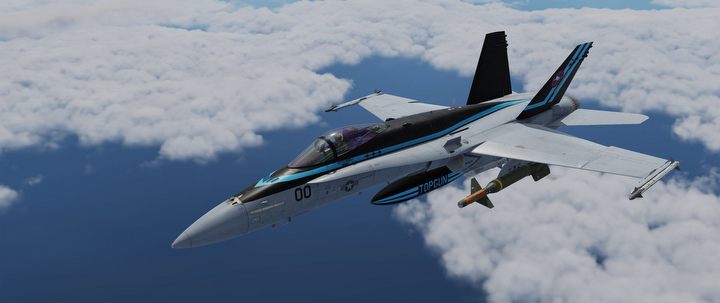
Thanks to modders, F/A-18 Hornet is now available in DCS – and it almost looks like the one in the new movie.
And what about the real Top Gun? Is it possible to make a campaign based on film in DCS World – with the same characters and music? Did Baltic Dragon ever had the idea of obtaining the rights from Paramount Pictures to use the universe and heroes of Top Gun: Maverick in creating a licensed DCS World campaign? Maybe a prequel, since the Hornet model in DCS is an older version of the machine?
That's a actually the case, but ...
Some time ago, a friend of mine who worked with Paramount contacted me and offered to create a series of short mini-missions that would be used during events promoting the film. However, since then, the release has been postponed several times, and the proposition itself has blurred out somewhere along the way. But overall the idea to make a campaign based on "Top Gun" is very interesting and worth considering! Perhaps we can discuss it with the rest of Fighter Pilot Podcast team and see how to approach it. – Baltic Dragon
Top Gun forever
If the idea of a Top Gun game from Baltic Dragon, or any other 3rd-party creator, set within DCS World doesn't work out, the DCS World community will surely deliver it with mods and additional content at some point. We have already witnessed it already with the release of the F-14 Tomcat (somewhat coincidentally, the iconic fighter from the first part of the film series) module from Heatblur studio. Skins based on the livelry of the squadron known from the movie, along with the paintings of Maverick, Goose, IceMan and others' helmets appeared almost immediately. Someone also created a mission in which we escorted a confused Cougar to the aircraft carrier; practice combat scenarios with A-4 Skyhawk aircraft were also created and, of course, those with the F-5 Tiger, role-playing as MiG-28. Not to mention the sheer number of screenshots showing the inverted Tomcat flying over the black MiG that soon appeared.
The creators of the F-14 module from Heatblur studio themselves also smuggled in some easter-eggs referring to the Top Gun movie. For this purpose, they used the RIO (Radar Intercept Officer) sitting in the back seat, who's replaced in the game by the artificial intelligence called "Jester." It helps the pilot in an extremely immersive way, thanks to many dialogue lines recorded. In this way, the player quickly learns about the detection of hostile targets or a rocket speeding towards them. Some of the messages, however, are much less official and serve to relax the atmosphere, and two of them refer to the movie Top Gun. Sometimes after landing, we can hear that Meg Ryan (the wife of "Goose" in the movie) would be proud of us, and whenever the F-5 Tiger in a black skin is detected on the radar, "Jester" will report that it as "MiG- 28” – a fictional machine from the movie.
Just fly!
As you can see, in the world of complex flight simulators dripping with realism, abbreviations and terminology, there is still room for some entertainment and human emotions. Despite the possibility of using only text and voice acting, usually from amateurs, many of the DCS World story campaigns provide an unforgettable experience. And we can confidently say that each of these missions completely outclasses the scenarios of war from both parts of Top Gun in terms of professionalism, authenticity and credibility. Looking at the announcements coming up, the choice ought to become richer, both in terms of campaigns, new planes and environments. Will the appearance of Top Gun: Maverick in cinemas help in the creation of some completely new productions, new flight simulators? We'll see in some time, and for now – there's plenty to choose from anyway!
